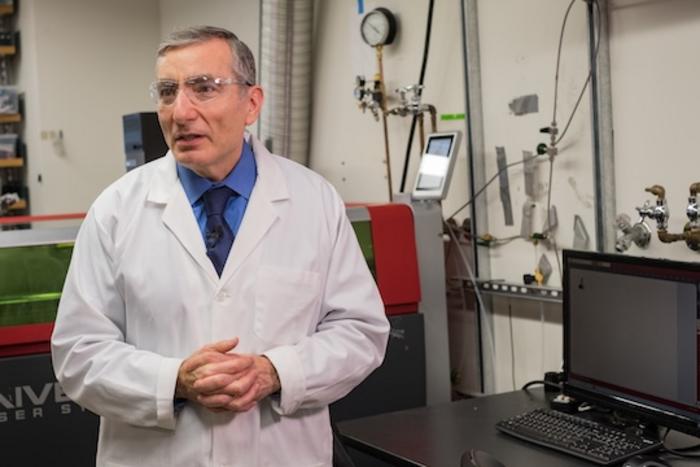Scientists at Rice University, in collaboration with the U.S. Army Engineer Research and Development Center (ERDC), part of the Army Corp of Engineers, are making headway in addressing per- and polyfluoroalkyl substances (PFAS) contamination. These persistent pollutants, which pose a serious threat to the environment and human health, have proven difficult to eliminate using conventional methods.

Credit: Photo by Jeff Fitlow/Rice University
Scientists at Rice University, in collaboration with the U.S. Army Engineer Research and Development Center (ERDC), part of the Army Corp of Engineers, are making headway in addressing per- and polyfluoroalkyl substances (PFAS) contamination. These persistent pollutants, which pose a serious threat to the environment and human health, have proven difficult to eliminate using conventional methods.
The research effort, led by Rice chemist James Tour, has been bolstered by a new four-year, $12 million cooperative agreement with the ERDC which will support the development and scaling of innovative techniques for PFAS remediation and resource recovery.
The research team has introduced a rapid electrothermal mineralization (REM) process. This method uses electrical input plus biochar, an environmentally friendly conductive additive, to heat PFAS-contaminated soil to over 1,000°C in seconds through direct current pulse input. The process transforms PFAS into nontoxic calcium fluoride with removal efficiencies over 99.9% and mineralization ratios exceeding 90%, making it an effective solution.
The REM process not only preserves essential soil properties but also demonstrates scalability, capable of treating large volumes of soil once scaled and deployed.
“This is a substantial improvement over previous methods, which often suffer from high energy and water consumption, limited efficiency and often require the soil to be removed,” Tour said.
The research team is exploring urban mining of electronic and industrial waste to recover rare earth and critical elements. Moreover, they are developing a new generation of flash heating technology known as flash-within-flash, which allows for the bulk synthesis of key materials. These efforts are supported by theoretical frameworks and optimized through machine learning.
“The significance of this advancement extends beyond environmental remediation,” Tour said.
The new methods build on the team’s prior success with the cooperative agreement “Flash Joule Heating to Destroy Hazardous Waste and Repurpose it For Energy or Urban Mining of Valuable Metals.”
By offering a scalable, efficient and environmentally friendly solution for PFAS remediation, this work addresses a pressing environmental issue with significant societal impact. Further, the potential for urban mining of e-waste opens new avenues for sustainable resource recovery, reducing reliance on traditional mining practices and mitigating environmental damage.
Looking ahead, the team plans to field test the REM process and further explore the potential of their urban mining technologies.
“This research advances scientific understanding but also provides practical solutions to critical environmental challenges, promising a cleaner, safer world,” said Christopher Griggs, a senior research physical scientist at the ERDC.



